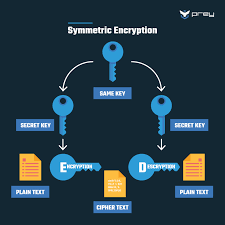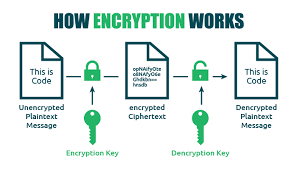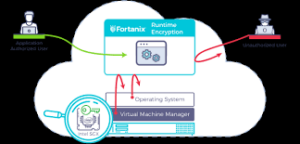Several important insights:
Key Takeaways:

- Job Disruption at DBS Bank
- DBS plans to cut approximately 4,000 contract and temporary jobs over the next three years
- Permanent staff will not be affected
- AI is expected to take over many repetitive tasks

- Roles Most at Risk
- Customer service roles
- Compliance jobs
- Risk management positions
- Data entry clerks
- Some bank teller functions
- Marketing and sales roles involving fundamental data analysis

- Why Banking is Primed for AI Adoption
- Banks have massive amounts of data
- Financial institutions have resources to invest in AI technologies
- Consumers are willing to share data for more efficient services
- Sophisticated risk modeling and regulatory requirements support AI integration

- Opportunities and Worker Adaptation
- 79% of financial sector employers struggle to find talent
- New roles emerging in AI system development and management
- Workers need to:
- Develop coding and software skills
- Enhance critical thinking and communication abilities
- Learn to work alongside and interpret AI systems

- Government and Industry Response
- Singapore is investing in upskilling initiatives
- Emphasis on preparing employees for an AI-driven future
The overall message is that while AI will significantly transform banking jobs, human professionals remain crucial, especially for complex decision-making and strategic roles.

AI Disruption in Banking: A Comprehensive Analysis
Technological Foundations of Disruption
Data-Driven Transformation
The banking sector is uniquely positioned for AI integration due to:

- Massive volumes of transactional and historical data
- Sophisticated risk modeling capabilities
- Established digital infrastructure
- High computational resources
- Stringent regulatory frameworks that require precise data management
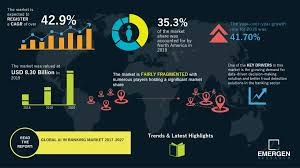
Specific Areas of AI Implementation
1. Customer Service Transformation
- Current State: Chatbots and virtual assistants replacing human representatives
- Key Impacts:
- 24/7 customer support
- Instant response times
- Reduced operational costs
- Standardized communication
- Potential loss of personalized human touch
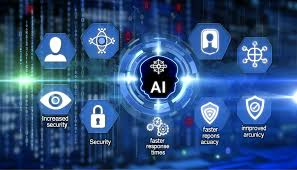
2. Compliance and Risk Management
- AI Applications:
- Automated surveillance systems
- Real-time credit risk assessment
- Fraud detection algorithms
- Regulatory reporting optimization
3. Operational Efficiency
- Automation Targets:
- Data entry processes
- Routine administrative tasks
- Basic financial analysis
- Transaction processing
- Document verification

Employment Landscape Shift
Job Displacement Projections

- High-Risk Roles:
- Customer service representatives
- Data entry clerks
- Compliance specialists
- Entry-level analysts
- Basic marketing roles
Emerging Job Opportunities
- New Role Categories:
- AI system developers
- Machine learning engineers
- AI ethics specialists
- Data interpretation experts
- AI-human interface managers

Skill Evolution Requirements
Technical Skills
- Advanced coding capabilities
- Data analytics proficiency
- AI system management
- Software engineering
- Programming languages relevant to financial technologies

Soft Skills Enhancement
- Critical thinking
- Strategic decision-making
- Complex problem-solving
- Emotional intelligence
- Cross-functional communication
- Adaptability to technological changes
Institutional Responses
Corporate Strategies

- Gradual AI integration
- Workforce reskilling programs
- Selective job reduction
- Investment in AI technologies
- Maintaining human oversight in critical decision-making
Government and Industry Initiatives
- Upskilling programs
- Professional development funding
- Technology adaptation workshops
- Collaborative industry-education partnerships
Potential Challenges
Implementation Barriers
- Initial high investment costs
- Complex integration with legacy systems
- Data privacy concerns
- Potential algorithmic bias
- Employee resistance to change

Ethical Considerations
- Maintaining human judgment in complex scenarios
- Ensuring fair and transparent AI decisions
- Protecting employee rights during technological transitions

Future Outlook
Predicted Trajectory
- Gradual, not sudden displacement
- Augmentation of human capabilities
- Continuous skill adaptation
- Collaborative human-AI work environments
Long-Term Vision
- Enhanced operational efficiency
- More strategic human roles
- Personalized financial services
- Increased innovation potential

Conclusion
AI disruption in banking is inevitable but not catastrophic. The key to success lies in proactive adaptation, continuous learning, and maintaining a balance between technological efficiency and human expertise.
.
Identity Theft
Identity theft is a pervasive form of fraud that can have devastating consequences for victims. In this crime, the perpetrator steals an individual’s personal information to assume their identity. This stolen information can often be gathered from discarded documents such as bank statements, utility bills, or even phishing scams.
Once armed with this data, the criminal may choose to open accounts in the victim’s name, a process known as application fraud. They might apply for credit cards, loans, or utility services under pretences, leaving the unsuspecting victim to deal with the aftermath.
The emotional toll of identity theft can be immense. Victims often face financial losses and damage to their credit scores, which can take years. In today’s digital age, account takeovers have become a prevalent threat to unsuspecting victims. Criminals typically employ tactics such as phishing, vishing, or smishing to manipulate individuals into revealing their personal information.

Phishing often involves deceptive emails that appear to come from legitimate sources. These emails may prompt the victim to click on malicious links or provide sensitive details under the guise of verifying their identity.
Vishing, or voice phishing, involves phone calls in which scammers impersonate bank representatives or trusted entities to extract confidential information directly from the victim. Similarly, smishing involves text messages that lure individuals into divulging critical data.
Once armed with this personal information, the criminal can easily convince a bank to change the account holder’s address. This deception allows them full access to the victim’s financial accounts and resources.

Additionally, some criminals are skilled enough to bypass bank interaction altogether. They can use the obtained credentials to log into online accounts directly, executing unauthorised transactions without needing any further verification.
The consequences for victims can be devastating, leading not only to financial loss but also emotional distress as they recover their stolen identities and secure their accounts. Consequently, individuals must remain vigilant and understand these risks to protect themselves against potential account takeovers for repair. Additionally, they may find themselves tangled in legal disputes as they try to prove their innocence.

Recovering from such a violation requires diligence and time, making it crucial for individuals to safeguard their personal information vigilantly. Implementing measures like shredding sensitive documents and monitoring credit reports can help prevent these types of crimes before they occur.
Maxthon
Maxthon has set out on an ambitious journey aimed at significantly bolstering the security of web applications, fueled by a resolute commitment to safeguarding users and their confidential data. At the heart of this initiative lies a collection of sophisticated encryption protocols, which act as a robust barrier for the information exchanged between individuals and various online services. Every interaction—be it the sharing of passwords or personal information—is protected within these encrypted channels, effectively preventing unauthorised access attempts from intruders.
 This meticulous emphasis on encryption marks merely the initial phase of Maxthon’s extensive security framework. Acknowledging that cyber threats are constantly evolving, Maxthon adopts a forward-thinking approach to user protection. The browser is engineered to adapt to emerging challenges, incorporating regular updates that promptly address any vulnerabilities that may surface. Users are strongly encouraged to activate automatic updates as part of their cybersecurity regimen, ensuring they can seamlessly take advantage of the latest fixes without any hassle.
This meticulous emphasis on encryption marks merely the initial phase of Maxthon’s extensive security framework. Acknowledging that cyber threats are constantly evolving, Maxthon adopts a forward-thinking approach to user protection. The browser is engineered to adapt to emerging challenges, incorporating regular updates that promptly address any vulnerabilities that may surface. Users are strongly encouraged to activate automatic updates as part of their cybersecurity regimen, ensuring they can seamlessly take advantage of the latest fixes without any hassle.
In today’s rapidly changing digital environment, Maxthon’s unwavering commitment to ongoing security enhancement signifies not only its responsibility toward users but also its firm dedication to nurturing trust in online engagements. With each new update rolled out, users can navigate the web with peace of mind, assured that their information is continuously safeguarded against ever-emerging threats lurking in cyberspace.
The post AI’s Impact on Banking Jobs in Singapore appeared first on Maxthon | Privacy Private Browser.

